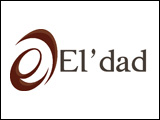Researchers with the University of Alberta have successfully harnessed Near Infrared Reflectance Spectroscopy to determine the digestible energy content of barley.
Near Infrared Reflectance Spectroscopy, a non-invasive technique that uses light to analyze the chemical bonds in feedstuffs, has been used for quite awhile in the grains industry to provide simple feed quality analysis and analysis of other quality parameters such as moisture content.
The University of Alberta, in collaboration with Alberta Agriculture and Rural Development, has focused on digestible nutrient profiles, particularly digestible energy in cereal grains, and has developed a calibration to predict barley digestible energy.
University of Alberta Animal Science Professor Dr. Ruurd Zijlstra says NIRS analysis is both quick and accurate.
The actual analysis itself, once you have a calibration in place, takes one to two minutes so you have to sample in front of the instrument and two minutes later you have a prediction of the energy quality of the next sample of cereal grain that you scan.
Obviously there is time involved in getting the sample to the lab but then, once we have the data in the lab, the lab and the computer in the lab is linked up to the internet so the data can be returned to the person that sent the sample the same day.
The accuracy for predicting digestible energy is about 60 to 70 kilocalories digestible energy and, to put that into a percentage, that’s an accuracy of two to three percent so that is quite similar to the accuracy for a lot of the lab analysis that are based on chemical analysis.
Dr. Ruurd Zijlstra says NIRS can be used to analyze the quality of any cereal grain and researchers are now working on a calibration for wheat digestible energy.



